Our Offers
Our mission
Our mission is to help our clients in solving their technical/environmental problems related to fluid flow and heat/mass transfer using advanced Computational Fluid Dynamics (CFD) models and the general-purpose CFD software, PHOENICS, as a framework for modeling. We have been providing CFD software sales and training/consulting services in Canada, USA and other countries since 1998. Various advanced customized and validated CFD models are available for industrial, environmental and research applications. Current ACFDA’s offers are described on the link and two typical customized CFD models are illustrated below.
Air Quality and Infection Risk Analysis
A CFD analysis of indoor air quality and infection risk is illustrated below in a case of potential virus propagation in a typical dental/medical clinic. A transient aerosol model built in PHOENICS/FLAIR software is applied. The following two animations show the dynamics of 3% clouds of 5-micron droplets carrying the virus particles released from the patient's mouth through breathing during 16 seconds (with an air purifier turned OFF or ON). The steady-state analysis of air purifier's effect on air quality and infection risk is also
provided.
The CFD model is recommended for developing the effective mitigation measures aimed at reducing the infection risks and improving the indoor air quality in medical/dental clinics, hospitals, schools, workplaces and public spaces. The details on software, training and consulting services are available from info@acfda.org.
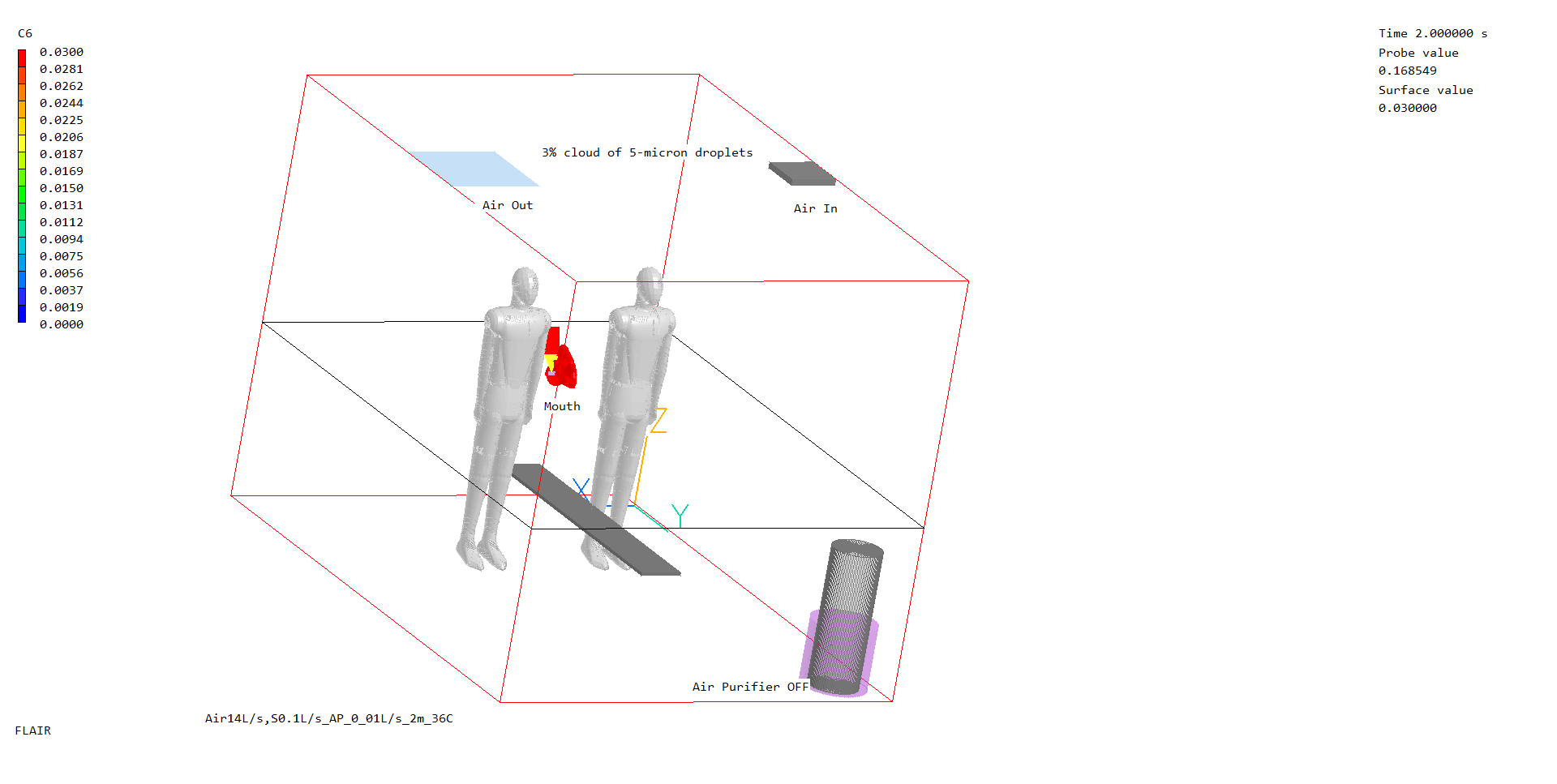
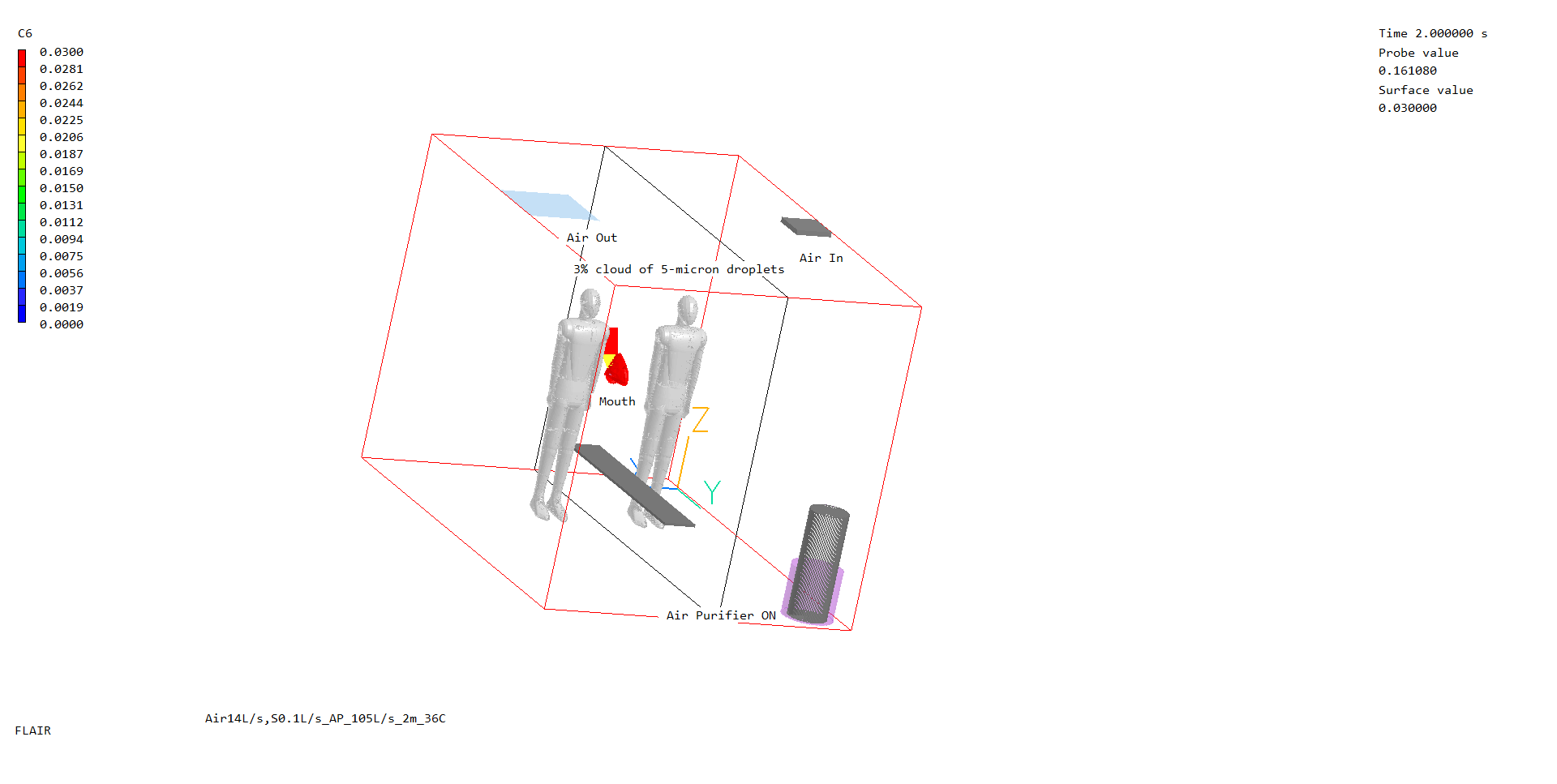
Wildfire Propagation Model
A novel fully physical transient multiphase CFD model of wildland fire initiation and spread, WILDFIRE, has been developed and validated. It is illustrated below in a validation case of experimental surface fire with a single ignition source (top animation) and in the cases with two ignition sources (next two animations). The model is capable of predicting the interaction between a front fire and a backfire and it is proposed for developing the effective mitigation measures. The model details are described in presentation, 2016 paper, 2020 paper and available from info@acfda.org.
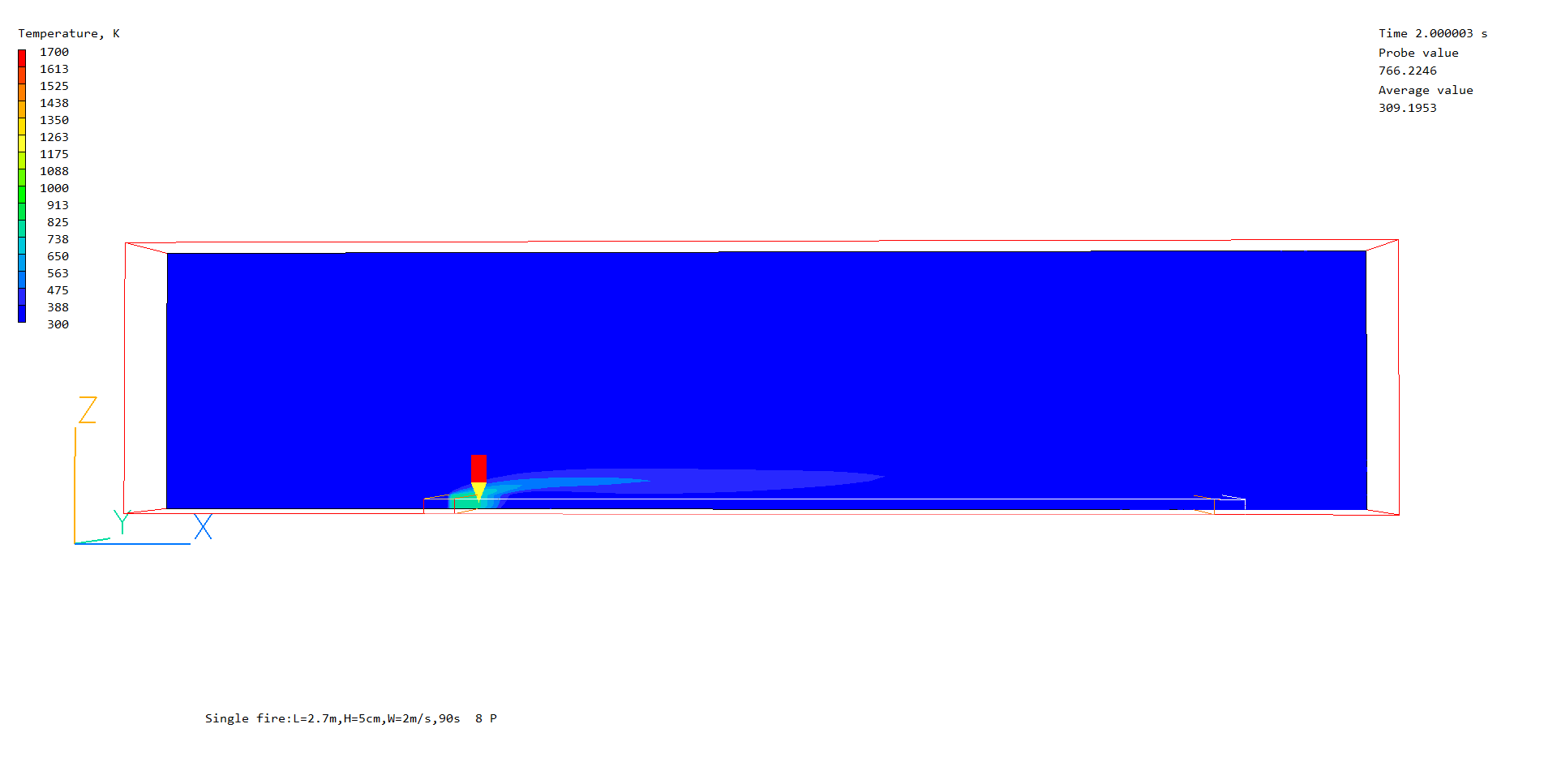
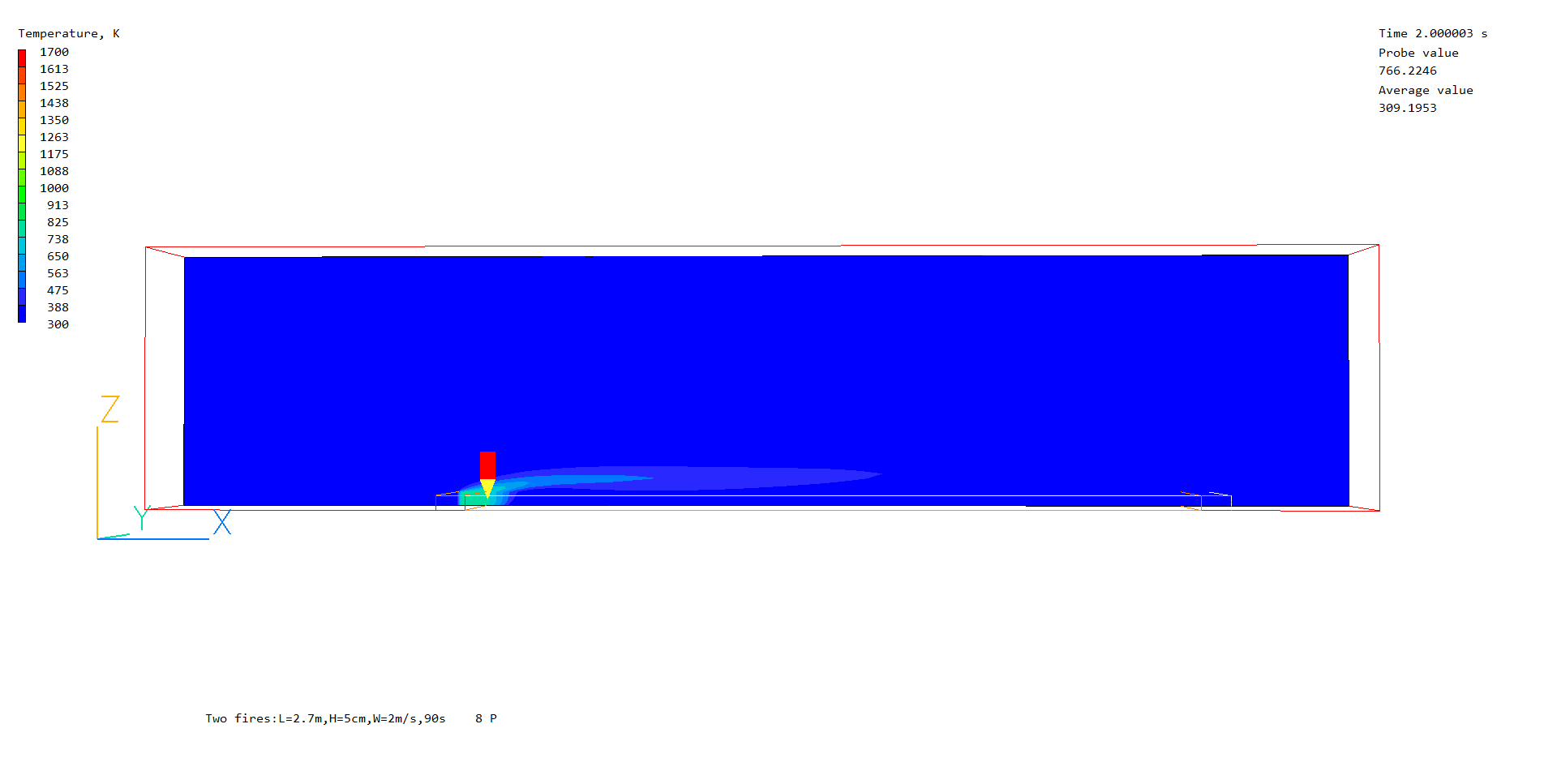
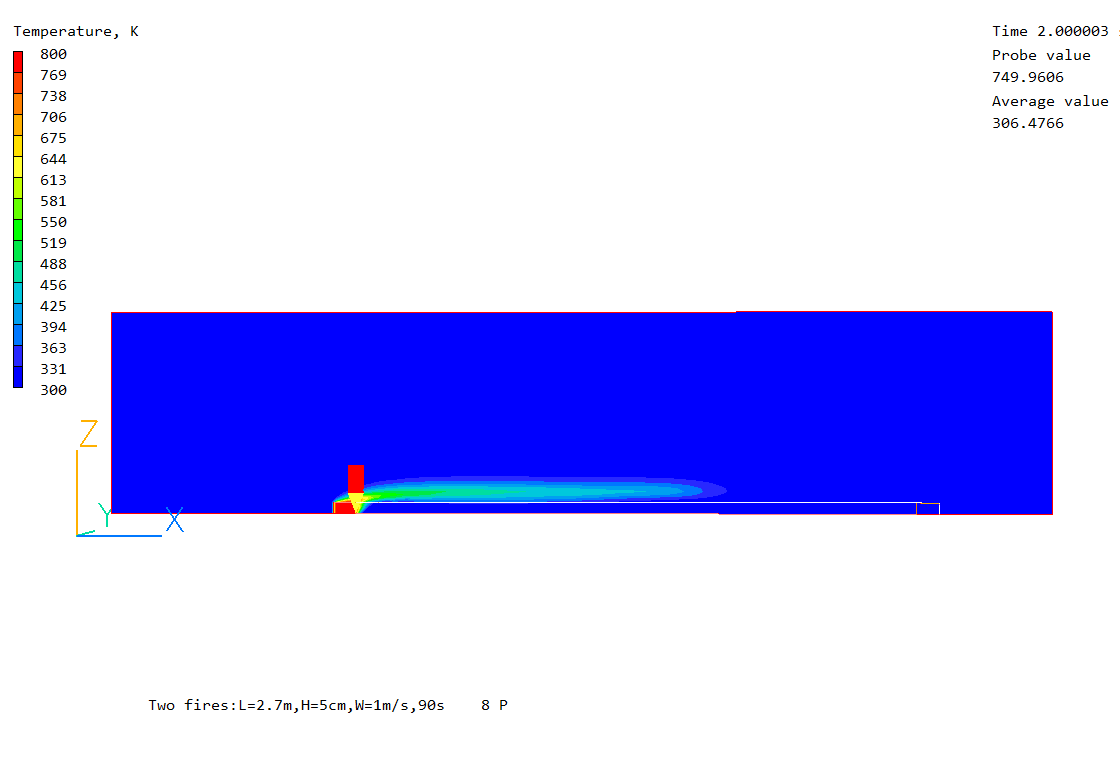
Company News
February 23, 2024
A CFD update from ACFDA is provided on the link.
July 28, 2023
The latest PHOENICS news is provided in the 2023 Summer Newsletter. An update from ACFDA is on page 7.
April 4, 2023
The latest PHOENICS news is available in the 2022 Winter Newsletter.
January 23, 2023
Aerosol CFD model has been applied for virus transmission prediction in a dental office. Model is recommended for developing optimal mitigation measures to improve the indoor air quality and minimize infection risks in medical/dental offices, hospitals, schools, workplaces, etc.
November 8, 2022
The latest PHOENICS news is available in the 2022 Autumn Newsletter. An update from ACFDA is on page 11.
May 10, 2022
The PHOENICS 2022 software version features are described in brochure.
November 18, 2021
The latest PHOENICS news is available in the PHOENICS at 40 Newsletter. An update from ACFDA is on page 3.
July 2, 2020
Prospective collaboration between Purdue Northwest's Center for Innovation through Visualization and Simulation (CIVS) and ACFDA was discussed on June 24, 2020. Some technical details were provided in presentation.
May 30, 2020
PHOENICS/FLAIR aerosol model has been applied for CFD modeling of potential virus spread. It is recommended as an advanced tool for developing the health and safety mitigation measures (proper separation distances, ventilation, barriers, masks, etc.).
November 25, 2019
The latest PHOENICS news is available in the 2019 Autumn Newsletter.
September 9, 2019
The latest PHOENICS news is available in the 2019 Summer Newsletter.
June 6, 2019
The latest PHOENICS news is available in the 2019 Spring Newsletter.
March 22, 2019
The latest PHOENICS news is available in the 2019 Winter Newsletter.
November 26, 2018
The latest PHOENICS news is available in the newsletter.
November 25, 2018
An Eulerian-Eulerian two-phase CFD model of submerged combustion has been developed and tested for industrial applications. Details are available from info@acfda.org.
April 15, 2018
The latest PHOENICS news is available in the newsletter.
March 5, 2018
Collaboration with Modcon Systems Ltd. in the area of air/water quality analyses and environmental/fire safety assessments has started. Advanced customized CFD models will be used for predictive assessments.
February 21, 2018
The latest PHOENICS software news is available in the newsletter.
February 20, 2018
An advanced multi-scale model of thermo-chemical performance of ammonia cracking unit has been developed, implemented into PHOENICS software and validated in collaboration with GenCell Ltd.
January 10, 2018
An uncomplicated engineering method of calculating the probabilistic properties of turbulence-chemistry interaction has been developed, implemented into PHOENICS CFD software and validated in industrial combustion cases. Details are available from info@acfda.org.
May 1, 2017
The latest PHOENICS software news is available in the newsletter.
May 2, 2016
A novel physics-based multiphase CFD model of wildland fire initiation and spread, WILDFIRE, was developed, validated and presented on April 12, 2016 at the 5th International Fire Behavior and Fuels Conference in Portland, Oregon, USA. It accounts for drying, pyrolysis, char combustion, turbulent gaseous combustion, interphase exchange of mass, momentum and energy and radiative heat transfer. The model details are available in presentation and paper.
April 10, 2016
The latest PHOENICS software news is available in the winter newsletter and spring newsletter.
November 14, 2015
A customized CFD model of supercritical fluid flow and heat transfer was further developed, validated and presented on September 4, 2015 at the 16th International Topical Meeting on Nuclear Reactor Thermal Hydraulics (NURETH-16) in Chicago, USA. The details are available in paper.
November 4, 2015
The new PHOENICS 2015 software features and some applications are described in the newsletter.
August 5, 2015
The advanced CFD models have been developed and validated for environmental and risk and safety assessments (flammable gas release and dispersion, atmospheric pollutant dispersion and two-phase plumes from cooling towers and other industrial installations). The models are briefly described in paper. The cost-effective training/consulting and ready-to-use model templates are provided.
June 16, 2015
A customized CFD model of supercritical fluid flow and heat transfer was developed, validated and presented on May 18, 2015 at the 23 International Conference on Nuclear Engineering (ICONE23) in Chiba, Japan. CFD predictions agreed well with experimental data. The details are available in paper.
June 10, 2015
The latest PHOENICS software news is available in the newsletter.
April 10, 2015
The new PHOENICS 2014 software features and applications are described in the newsletter.
February 17, 2015
In April and May 2015, two special 4-day training/consulting sessions are arranged by our top CFD consultants in Orlando and Toronto. The format of sessions includes 2-day standard PHOENICS 2014 CFD software training, 1-day customized one-on-one training in a selected application area, and 1-day consulting clinic focused on finding sensible CFD solutions of problems/issues formulated by attendees. The slogan is “Show us a problem and take home its solution”. A free 2-month PHOENICS license enhanced by series of working templates will be offered to each attendee. Send your inquiries to info@acfda.org
August 11, 2014
A novel multi-group two-phase CFD model of drift drop plume was developed, validated and presented on July 10, 2014 at the 22 International Conference on Nuclear Engineering (ICONE22) in Prague, Czech Republic. CFD predictions agreed well with exerimental data. The details are available in paper.
August 8, 2014
PHOENICS 2014 CFD software is available for deliveries. The new software features and applications are described in the latest PHOENICS newsletter.
March 1, 2014
Basic and advanced customized PHOENICS CFD software training courses are provided by ACFDA in Toronto, Canada, Orlando, USA, on client sites and over the internet. Free 1-month software licenses are offered to course attendees. Send your inquiries to info@acfda.org
April 2, 2013
A CFD model for air quality assessment was presented on March 21, 2013 at the Air & Waste Management Association's Specialty Conference Guideline on Air Quality Models: The Path Forward. PHOENICS CFD predictions agreed well with CALPUFF modeling results. The details are available in paper.
March 9, 2013
PHOENICS 2012 CFD software is available for deliveries. The new PHOENICS software features and applications are described in the newsletter.
November 4, 2011
PHOENICS CFD software celebrated 30 in October. Its history has been described in Birthday newsletter.
October 15, 2010
WILDFIRE CFD model of interaction between crown wildfires and atmospheric boundary layer was developed and presented (presentation, abstract).
August 05, 2009
Advanced Gas-Liquid Flow (GLFLOW) CFD module has been developed, tested and validated. The module is ready for applications requiring complex gas-liquid flow analyses.
April 03, 2009
Gas release and dispersion (GRAD) CFD module has been developed and validated. The module is ready for environmental and safety applications.